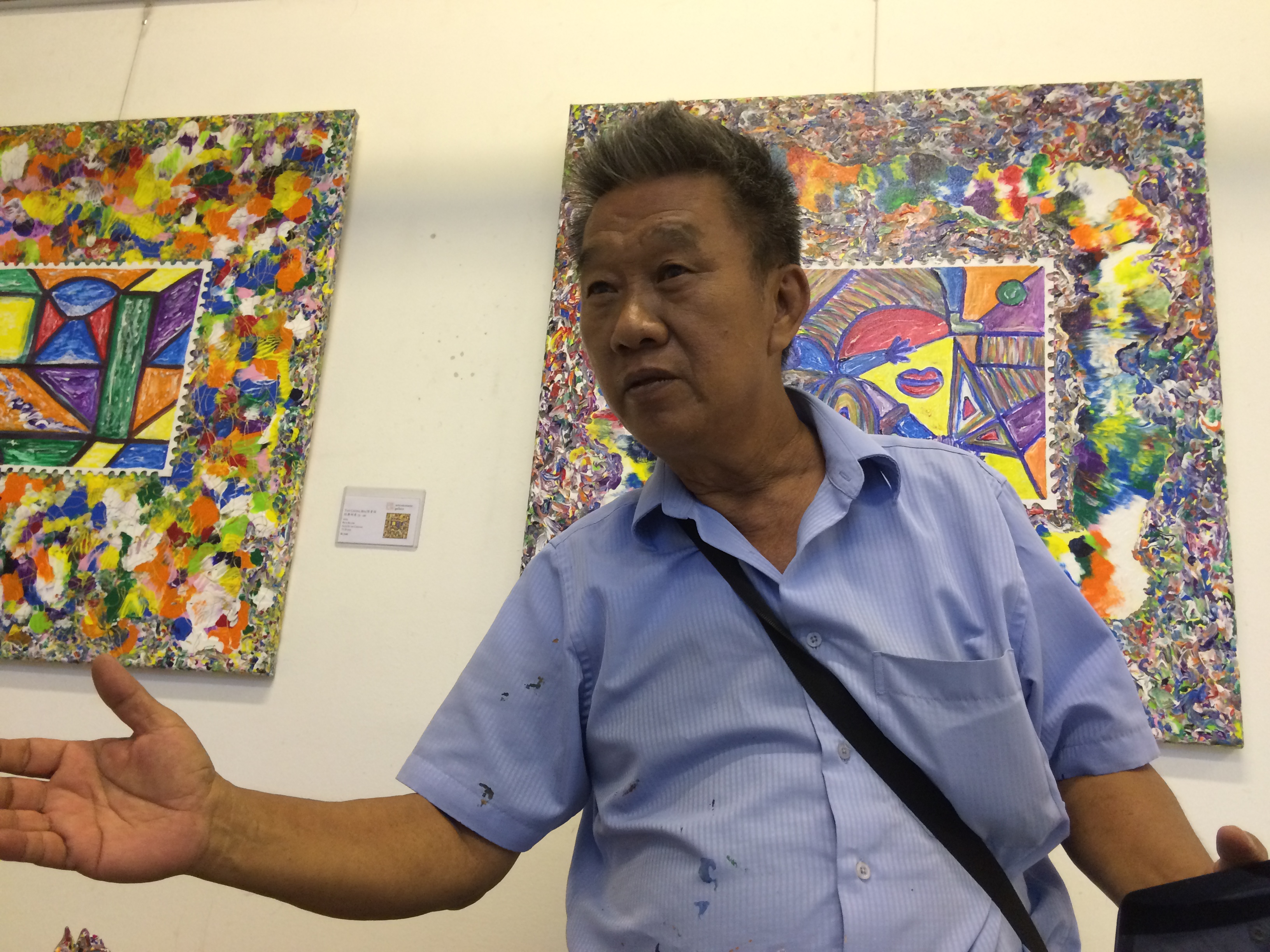It's not every day you come across a karung guni man, who also happens to be an artist — but that's exactly what 63-year-old Tan Chong Bin is.
Having stopped schooling after Primary 3, Tan, the oldest of seven children, was from eight years old above all else passionate about drawing. He sketched his father's photographs and whatever he could get his hands on, and soon afterward started painting, amid the odd jobs he did throughout the course of his life (which included prison time for failing to enlist for NS, by the way).
Now, one could say he has arrived: for the first time, artist and curator Ho Sou Ping, who founded artcommune gallery in Bras Basah Complex, will host Tan's very first solo exhibition (from Oct. 24 to Nov. 1), which will feature some 30 pieces of his art work.
After spending roughly an hour and a half chatting with him in Mandarin and Hokkien, discovering his intriguing background and story, here are five life lessons we learnt from him:
1. Learn the best things from everyone, and discover your own weaknesses.
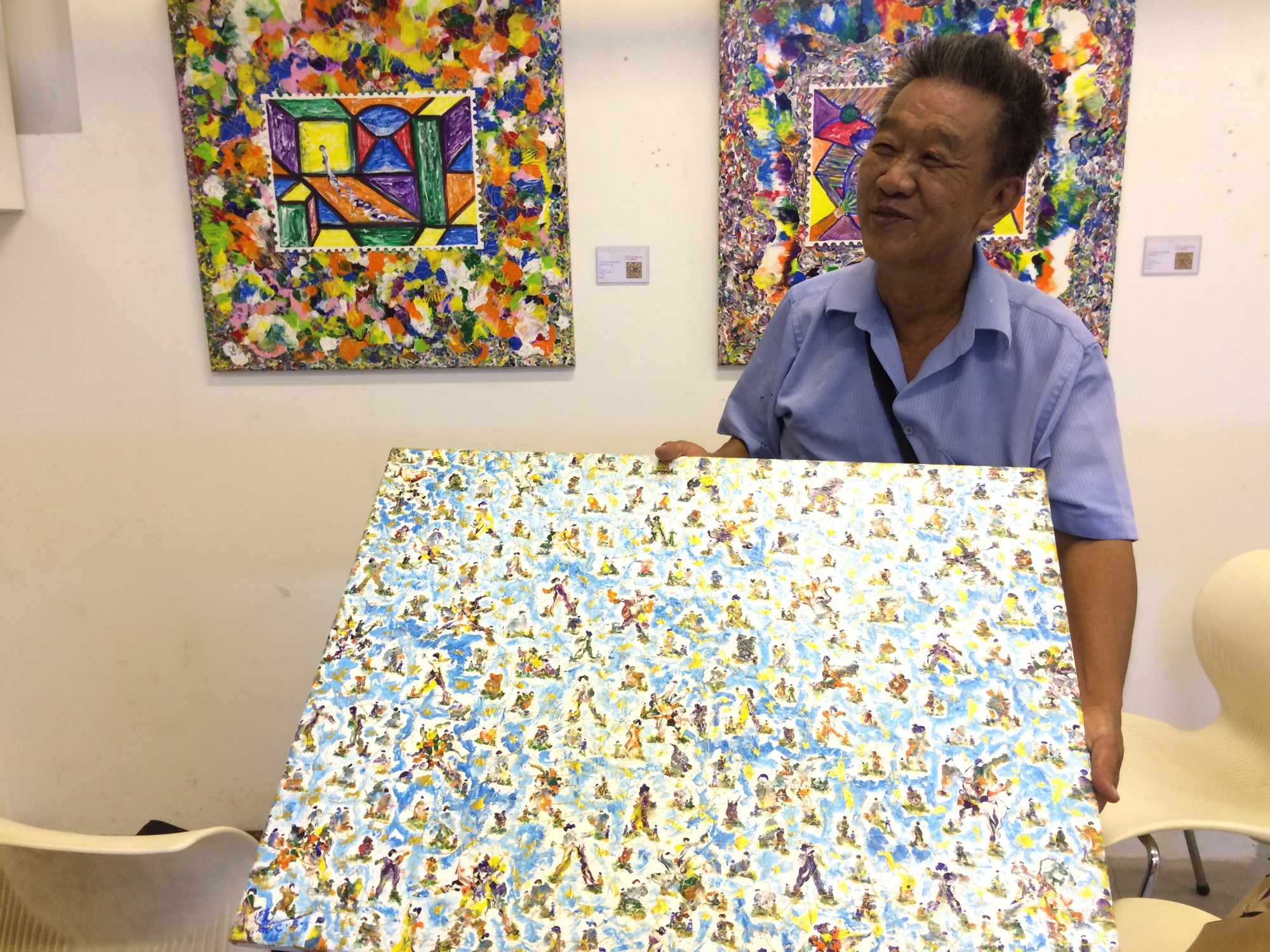 Photo by Jeanette Tan
Photo by Jeanette Tan
Tan repeats this several times in speaking to us. Since he never went to art school, everything he knows about his craft he picked up through research and practice on his own.
"It doesn't matter who you look at. You should go to everyone, from children's art exhibitions to the classic greats like Picasso, Van Gogh, Da Vinci (yep, he totally name-dropped them as if every other uncle his age would know them and their work), and learn from their strengths. The second thing you must do is to look at yourself and identify your weaknesses.
That's how you learn and improve. The world is my teacher — children, middle-aged adults, elderly people — I pick up their strengths and identify my weaknesses."
He tells us he is particularly inspired by the work of abstract expressionist artist Jackson Pollock, whose work he discovered some nine years ago.
"This Jackson Pollock is highly-skilled; his work is very, very good. His paintings have so many layers to them. It's really good."
2. Work smart; you can make something of value out of anything.
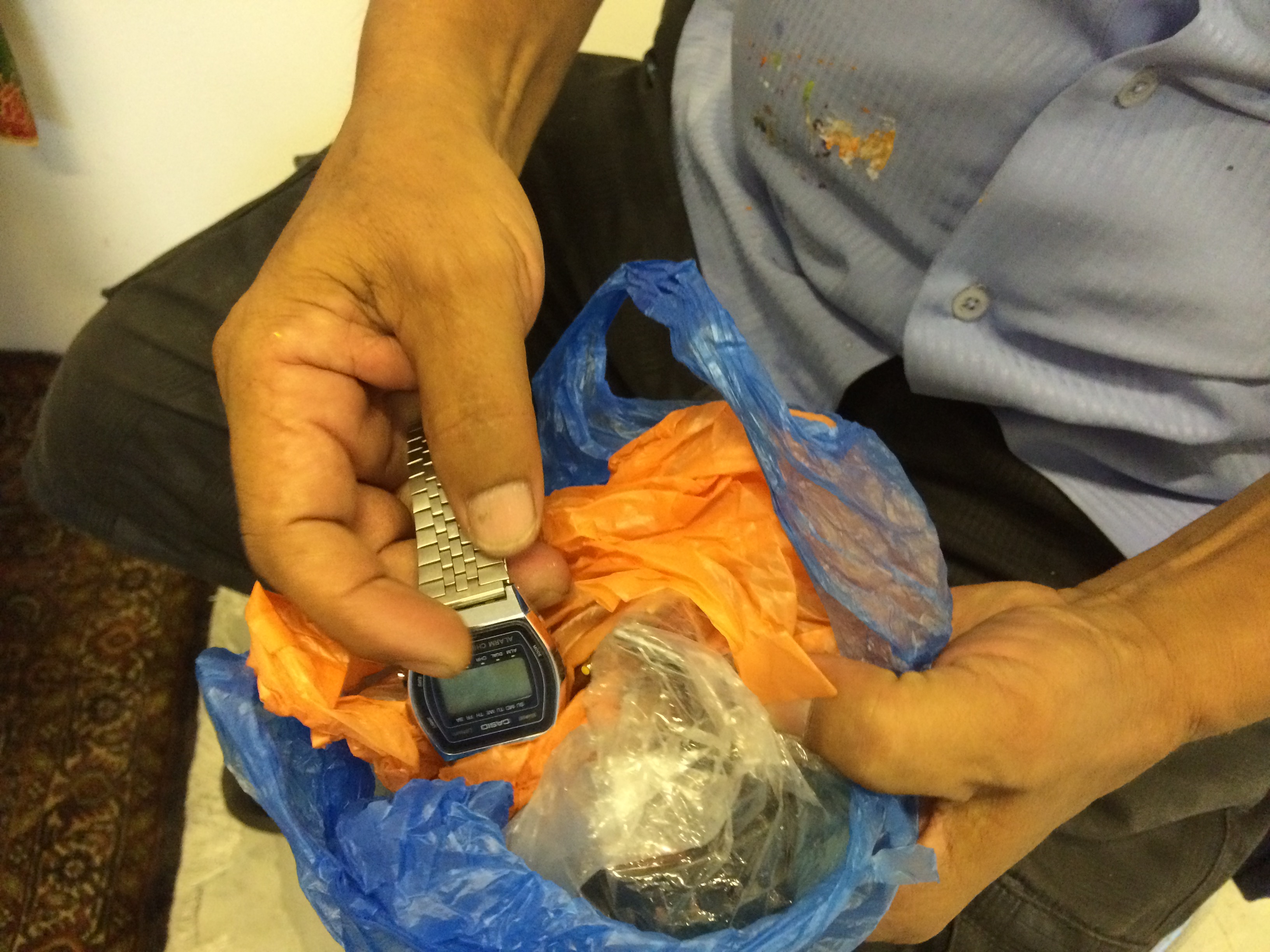 Photo by Jeanette Tan
Photo by Jeanette Tan
In response to a question about how he goes about doing his karung guni work on most of his days, he pulls out a plastic bag from his pants pocket and shows us roughly five or six old watches. For most of them, their batteries have died or their mechanisms don't work, but he keeps them anyway, fixes them and re-sells them at his Sungei Road Thieves' Market stall that he shares with a friend.
For analogue watches, he takes them apart and does this:
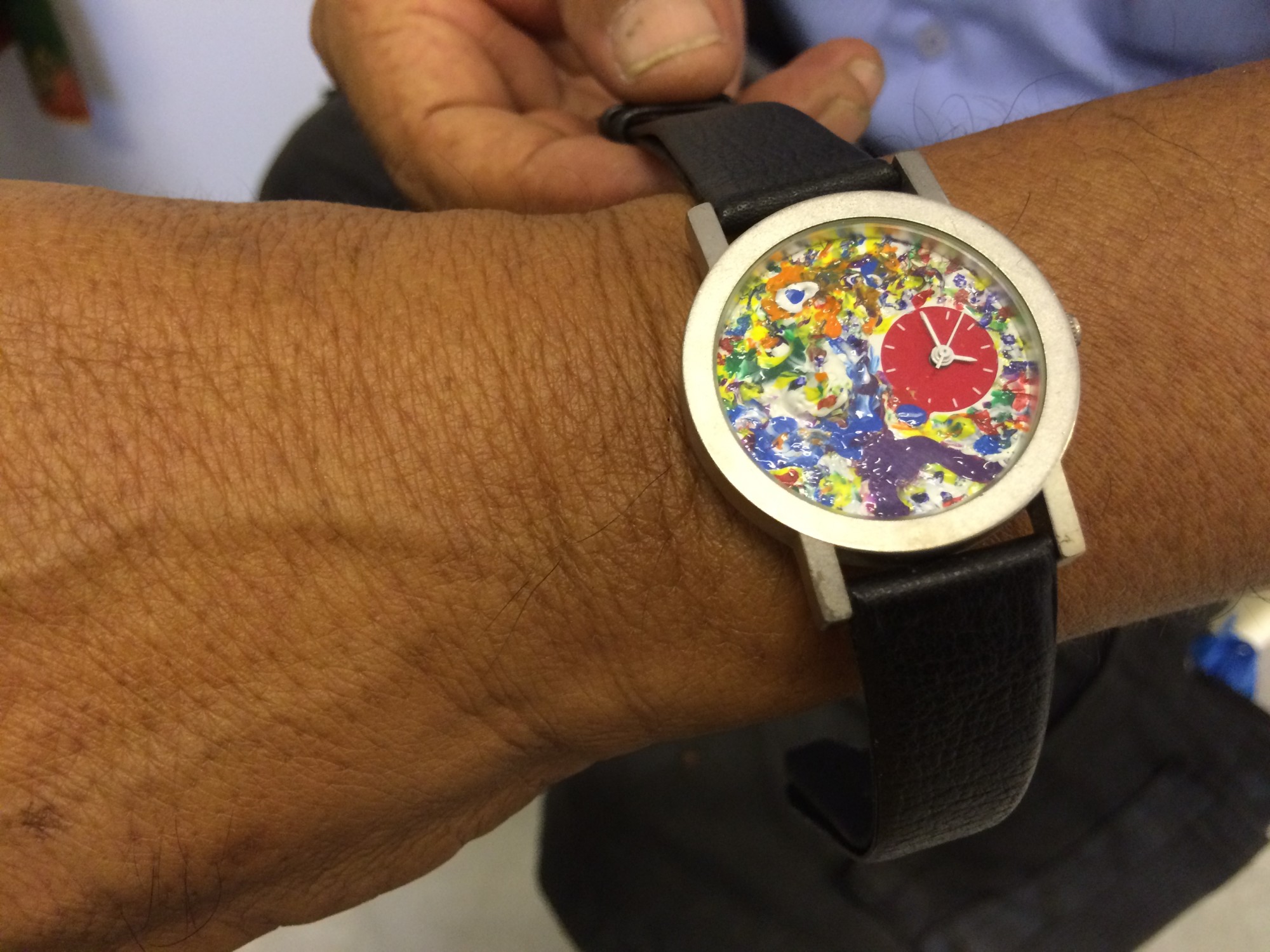 Photo by Jeanette Tan
Photo by Jeanette Tan
He sells these at his stall too, for fairly inexpensive prices (say $20 or $30?). One-of-a-kind hand-painted watches, anyone? Evidently the man mastered the hipster movement decades before it even became a thing.
Apart from repurposing (and in the latter case beautifying) watches, Tan doesn't do your regular door-to-door, block-to-block item collecting work that many karung guni folk partake in — he says he is better off walking around Thieves' Market and checking out what others have collected, then buying things he believes he can add value to and resell for a higher price.
"There are a hundred-plus stalls here. I just walk around, keep my eye to the floor and see what people have, and see what I can buy and resell. I don't go round places collecting things.
I think to myself, 'This one, okay, I can buy for $10 and sell for $15, so I'll make $5. Can. This one, I buy for $10 and sell for $5 or $6, then cannot lor.'"
He also doesn't restrict his paintings to watches:
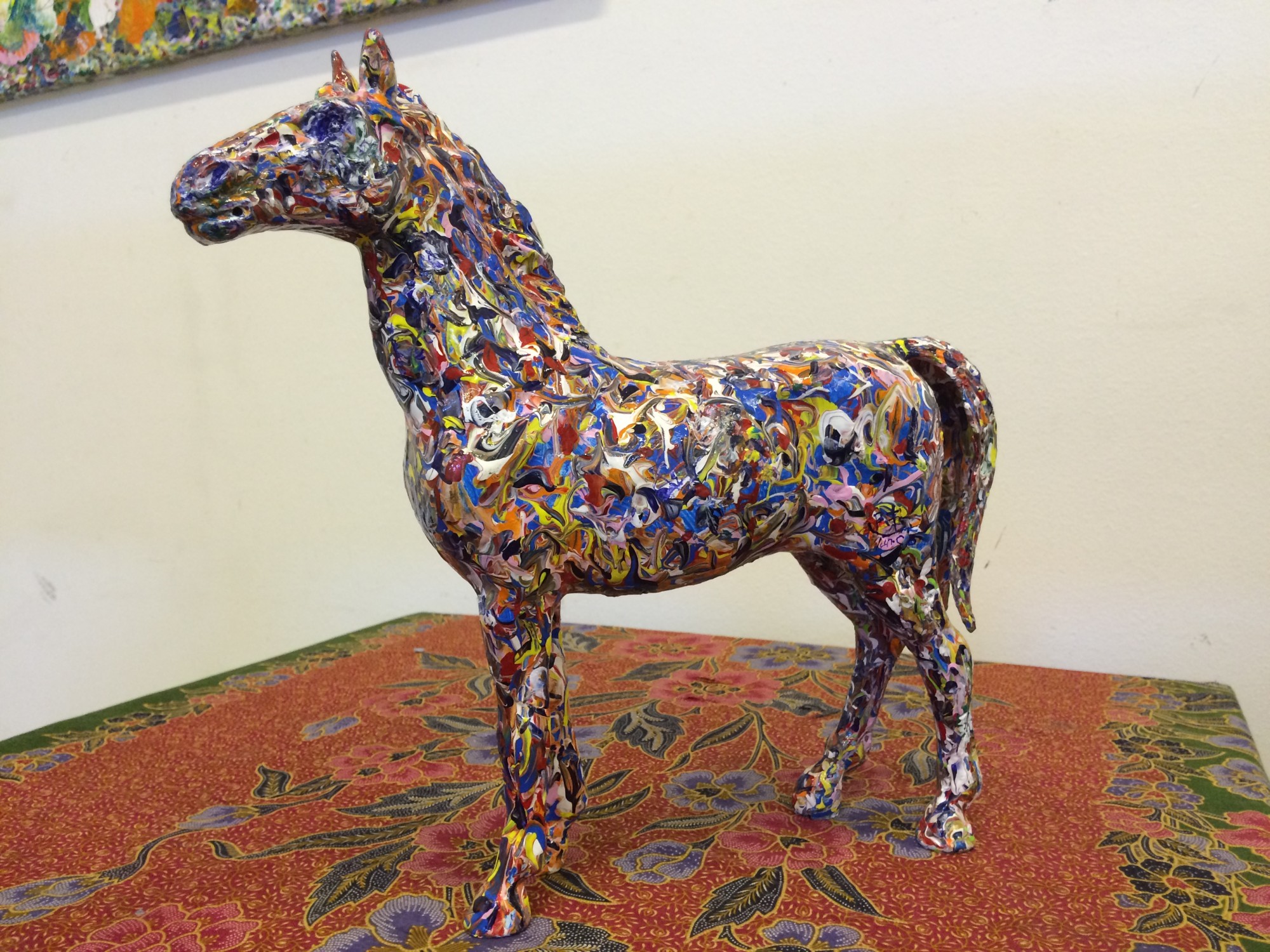 Photo by Jeanette Tan
Photo by Jeanette Tan
He's done dinosaur figurines, containers and more, too — many of which he previously sold already. On the day we met him, we learnt someone was trying to commission him to paint a car, too.
3. Do what you need to in the pursuit of your passions.
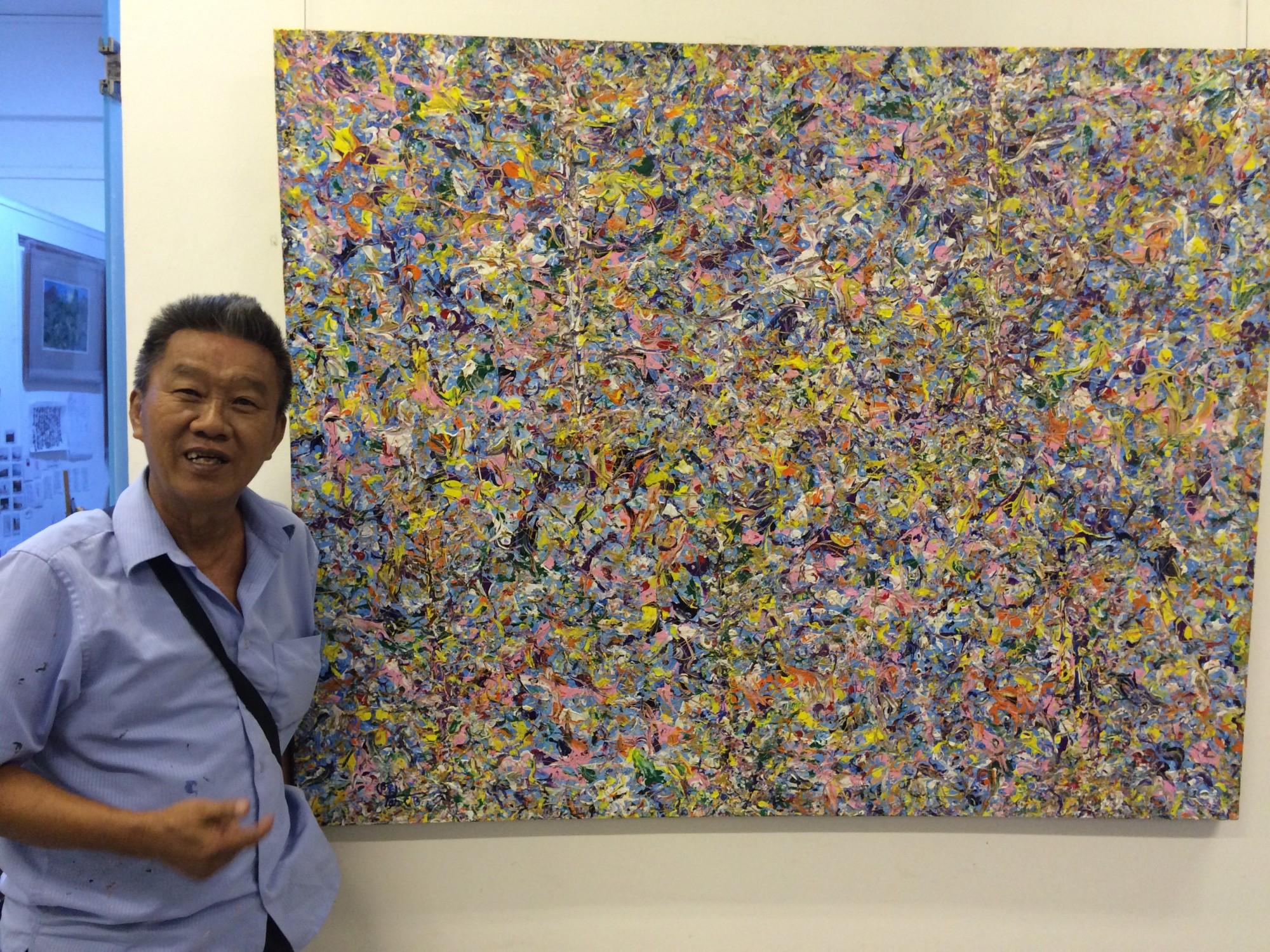 Photo by Jeanette Tan
Photo by Jeanette Tan
Yep, he painted that gigantic piece all on his own, over a period of two months last year — every morning, over two or three hours, before getting on with his day — and it won the Highly Commended Award at the 2014 UOB Painting of the Year competition.
To do it, though, he had to borrow more than $1,000 from a friend of his in order to purchase the art material he needed for the work, and forked out a large sum to rent a lorry that was large enough to transport his painting from his home in Circuit Road to UOB Plaza, where he entered it for competition.
Here's a closer look at two areas of the artwork, which was painted to express the ever-changing nature of everything in the world:
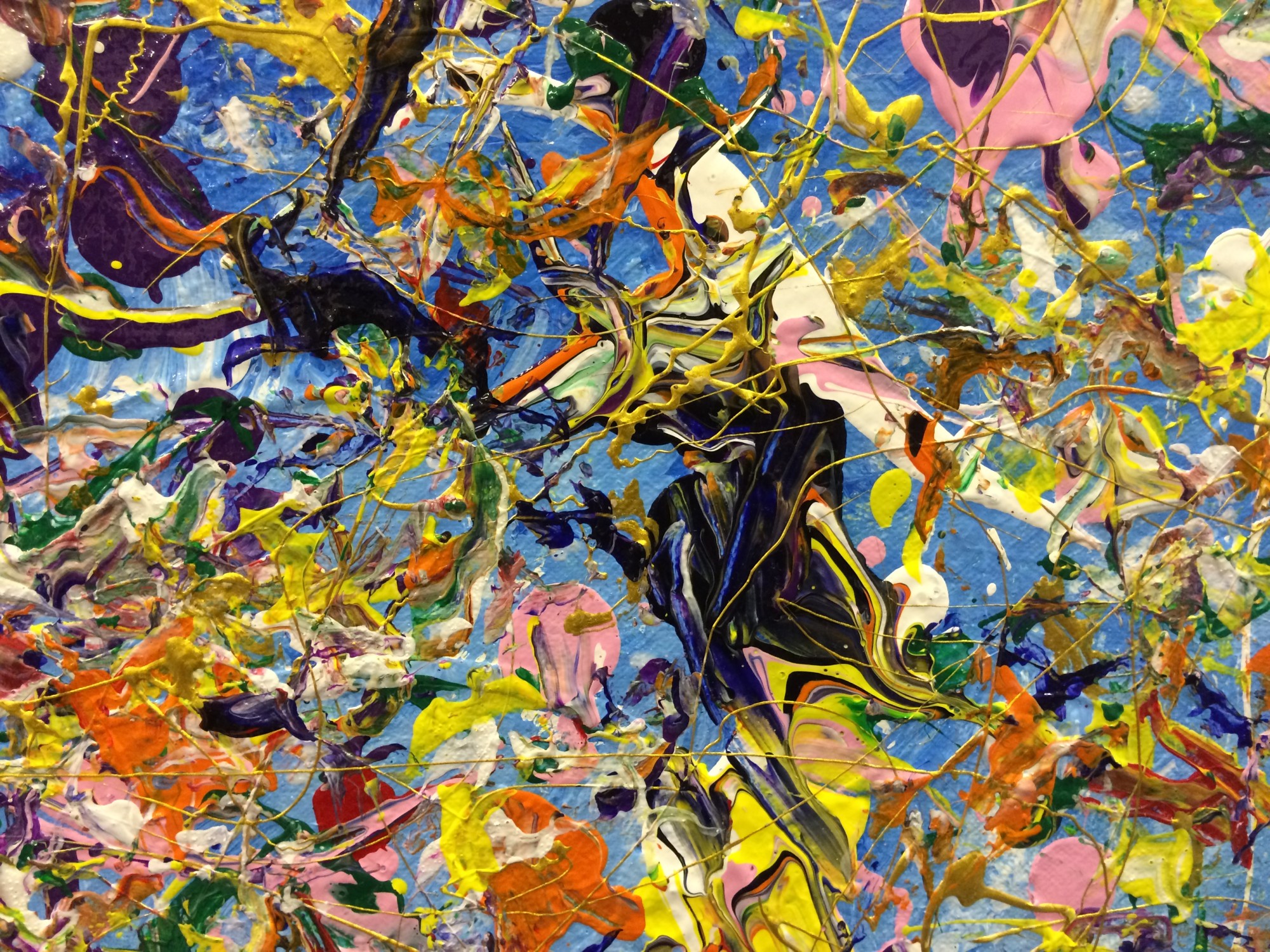 Photo by Jeanette Tan
Photo by Jeanette Tan
Where he leaves his initials:
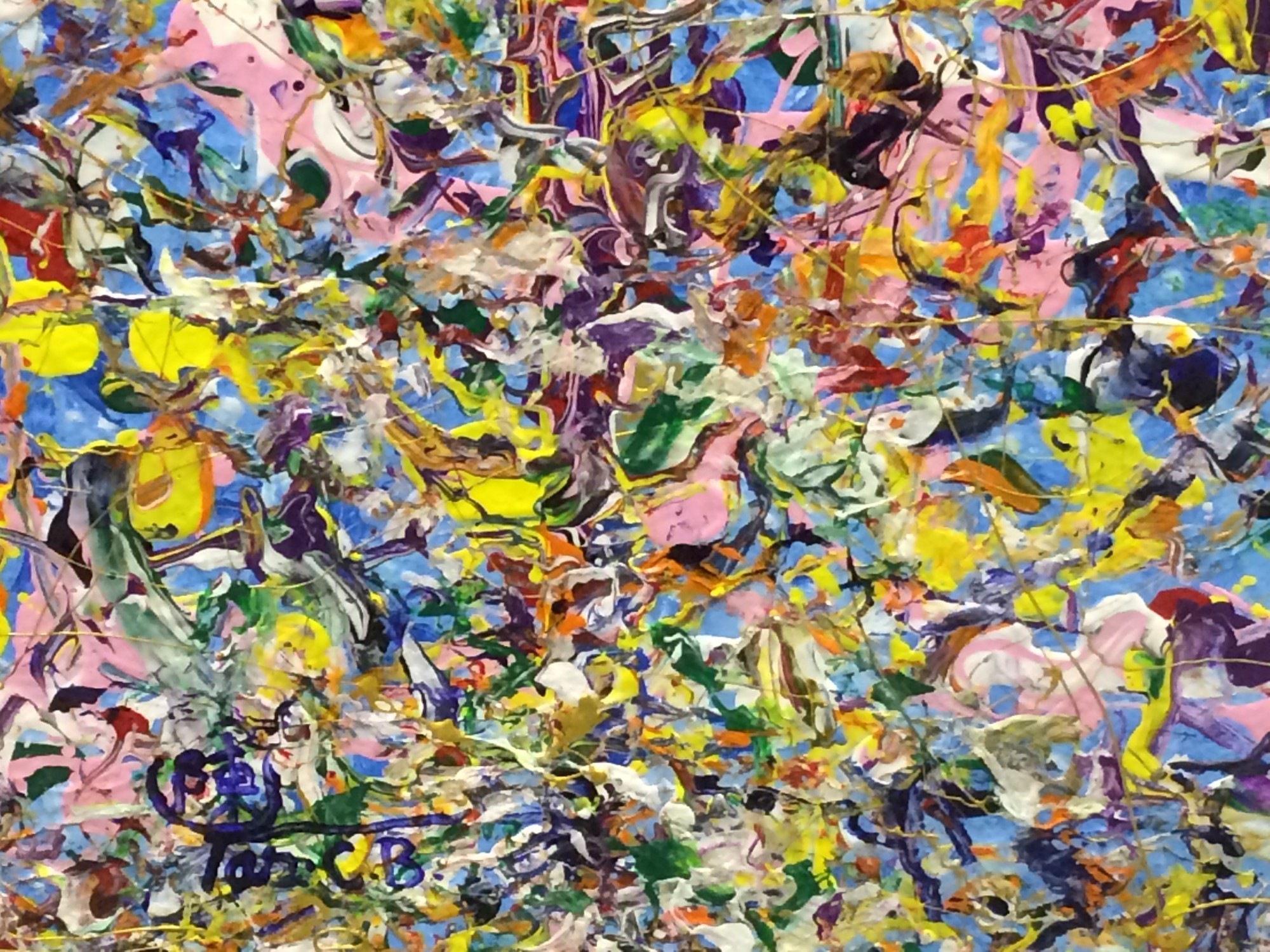 Photo by Jeanette Tan
Photo by Jeanette Tan
On the day of the competition, he brought along his trusty pair of pliers, which he would undoubtedly use to strike down the board upon which his painting was mounted, roll it up and hop on a bus home if his entry was rejected, because he had no money left for a return trip on the lorry he rented. Thankfully, he didn't need it.
4. Be adaptable.
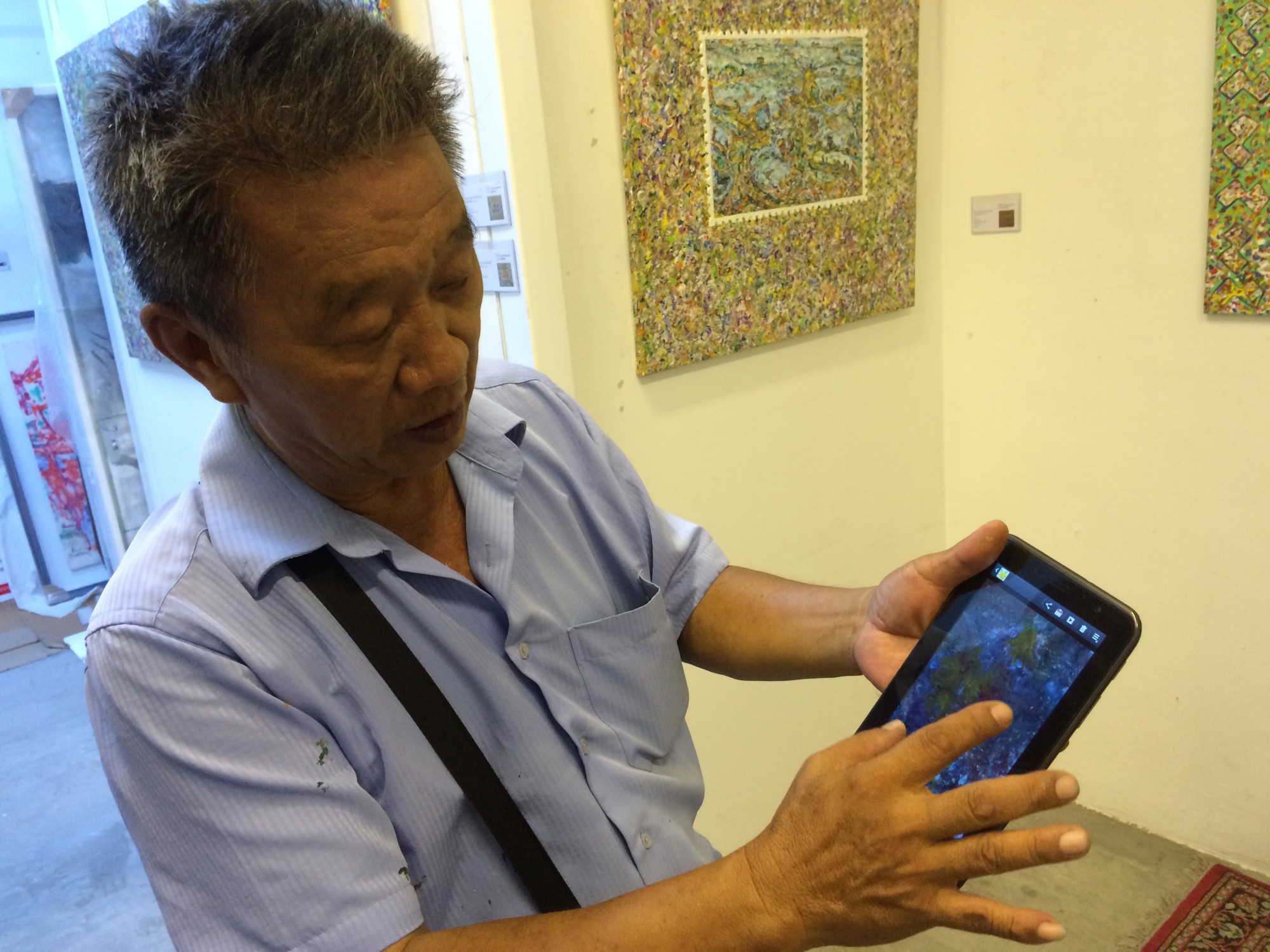 Photo by Jeanette Tan
Photo by Jeanette Tan
Tan says this is important, because no matter how old or young you are, there will always, inevitably, come a time where you will discover something that blows your mind — and not always in a good way.
"Now some of my friends cannot understand how a device can work without any buttons," he jokes. "Learn new technology, don't be afraid of it. Embrace it, adapt and keep up with the times. Understand it and see how you can capitalise on it to improve your own life."
He, for example, takes photos of his artwork so he can always revisit it when referring to it in conversation or for other instances — given the nostalgia that emerges in his tone whenever he talks about artwork he can't show us pictures of, we're sure he wishes he had his tablet earlier in his career.
5. Be humble.
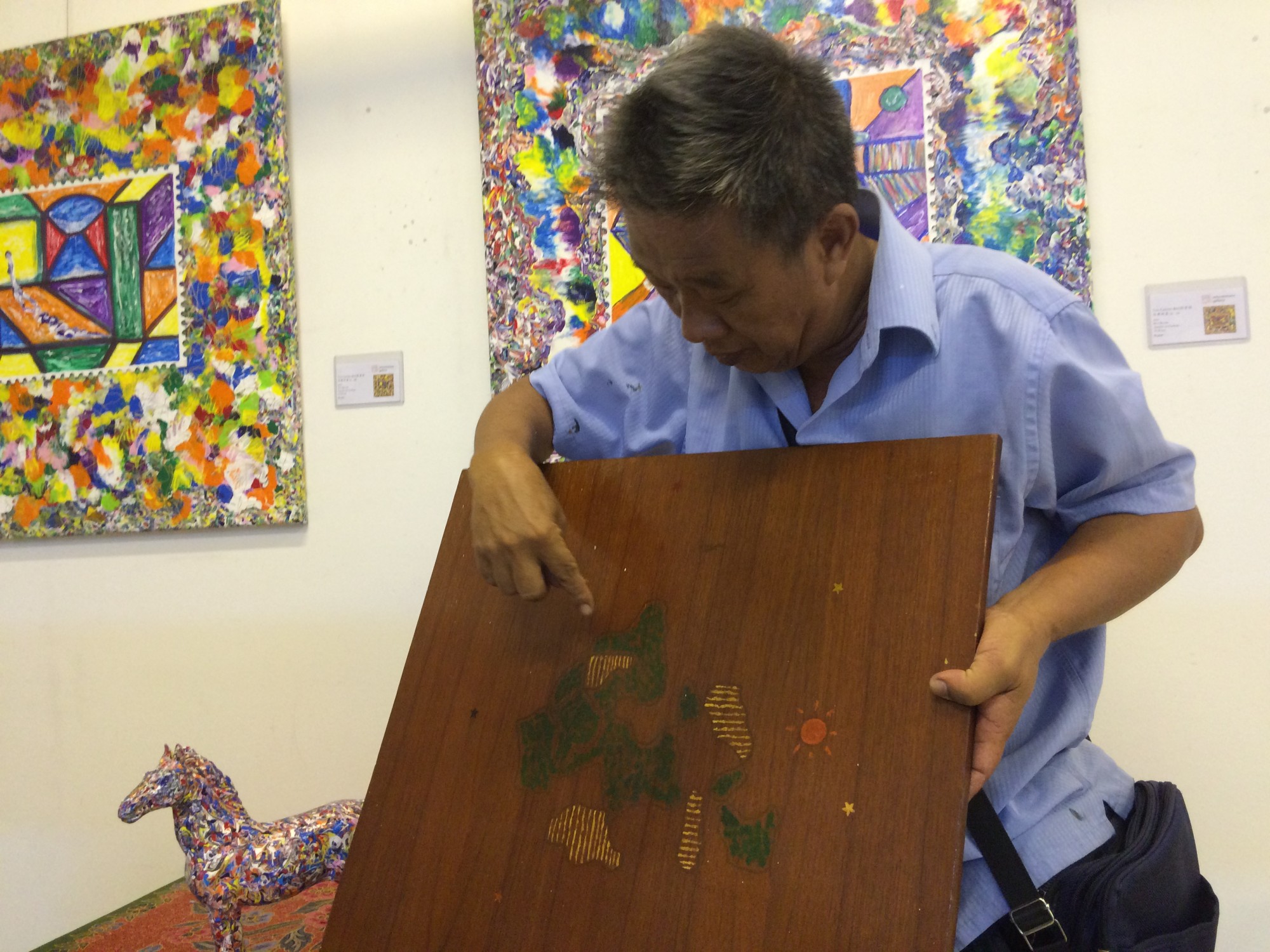 Photo by Jeanette Tan
Photo by Jeanette Tan
This is Tan's very first painting, that he brought to enter a competition held in City Hall when he was in his early twenties. Naturally, now that he revisits it, he says it is "Buay sai!" especially because, as the three judges pointed out back then, it doesn't even have a background to begin with.
He was still rather depressed, though, as he exited the room, walking in an opposite direction from where all the other artists were entering, and headed home, painting in hand — but he steeled himself to learn more, study other work more closely and develop his expression and skill further.
Tan says he went on to enter other competitions later on, and had his entries rejected too, and while every loss was disheartening, he simply resolved to improve himself even more.
Yes, he speaks of his work on display at the art gallery with pride and fondness, but he makes no attempt to disguise his background and beginnings.
"There are people who looked at my work and went, 'what's that? It looks so messy and confused.' 糊里糊涂 (a Chinese phrase for 'scatterbrained'). I asked my friend, who's a calligraphy artist, to paint the words '葫里湖图' (which roughly translates to a drawing of a lake within a bottle, also a pun on 糊里糊涂) inside a container I painted, to remind myself that carelessly-spoken words can take on new meaning with a little creativity!"
Tan Chong Bin's solo art exhibition, Voice of a Karung Guni Man, will run from October 23 to November 1 at art commune gallery, located at #02-43 in Bras Basah Complex.
Watch a short documentary about him here:
" width="760" height="428" frameborder="0" allowfullscreen="allowfullscreen">
Top photo by Jeanette Tan.
If you like what you read, follow us on Facebook and Twitter to get the latest updates.
If you like what you read, follow us on Facebook, Instagram, Twitter and Telegram to get the latest updates.
